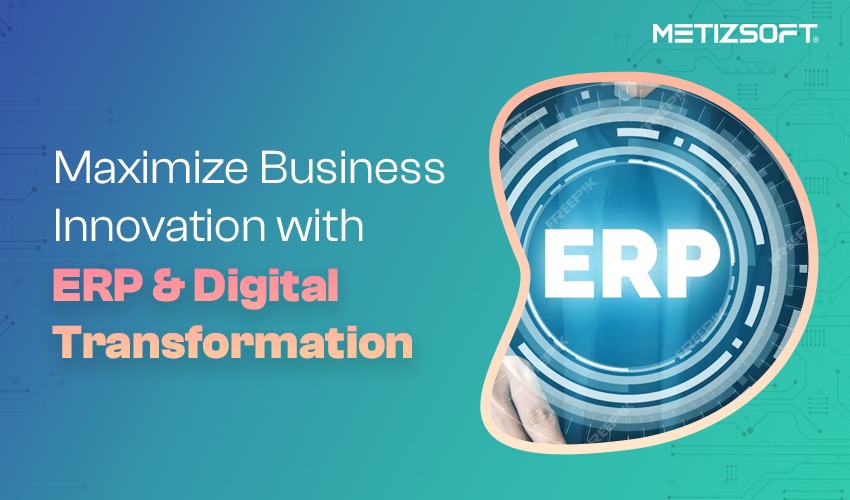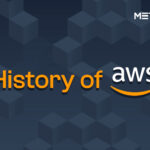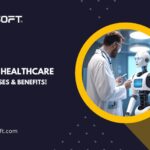
In a brand new, fast-paced enterprise panorama, staying aggressive requires more than indeed maintaining up with modern-day traits. It needs a proactive method to include technological enhancements, pressure innovation, and foster growth. Enterprise Resource Planning (ERP) structures and virtual transformation have become sensible gadgets to obtain goals. This article explores how ERP and virtual transformation intersect to gasoline enterprise innovation and facilitate sustainable increase.
Table of Contents
Understanding ERP and Digital Transformation
1. Enterprise Resource Planning (ERP)
Definition and Purpose: Define ERP as an included software solution designed to streamline and automate center industrial company strategies, which include finance, human assets, procurement, stock control, and more significantly substantial.
Functional Modules: Discuss the main modules of ERP systems: finance, supply chain manipulation, production, (customer relationship management) CRM Software, and commercial enterprise corporation intelligence.
Benefits of ERP: Highlight the benefits of imposing an ERP machine, which incorporates stepped-ahead operational performance, extra tremendous choice-making abilities, higher resource utilization, and standardized strategies throughout the commercial enterprise organization.
2. Digital Transformation
Conceptual Overview: Define virtual transformation as strategically leveraging virtual technology to modify commercial enterprise strategies, client reminiscences, and fee propositions.
Core Technologies: Explore key virtual generation riding transformation, collectively with cloud computing, data analytics, artificial intelligence (AI), machine learning (ML), Internet of Things (IoT), and robot technique automation (RPA).
Objectives and Imperatives: Discuss the primary goals of Digital Transformation, collectively with accelerated agility, innovation, patron centricity, operational excellence, and sustainable boom.
3. Intersection of ERP and Digital Transformation
ERP as a Digital Backbone: Position ERP structures as the virtual spine of businesses, offering a centralized platform for statistics control, way automation, and choice manual.
Digital Enablers inside ERP: Highlight how modern-day ERP structures include virtual enablers, which provide for AI & ML, IoT, and analytics to beautify abilities in areas like predictive preservation, name for forecasting, customized marketing and advertising, and deliver chain optimization.
Seamless Integration: Emphasize the importance of seamlessly integrating ERP with one-of-a-type digital initiatives to create a unified surroundings that forces save-you-to-give-up automation, records-pushed insights, and advanced consumer evaluations.
4. Driving Forces and Challenges
Market Forces: Discuss the marketplace forces propelling corporations toward ERP adoption and Digital Transformation, which incorporates evolving customer expectations, aggressive pressures, regulatory compliance, and disruptive upgrades.
Implementation Challenges: Address every day demanding situations encountered at some stage in ERP and Digital Transformation obligations, which include legacy device integration, facts migration complexities, organizational resistance to exchange, and expertise gaps.
5. Strategic Considerations and Best Practices
Strategic Alignment: Stress the significance of aligning ERP and virtual transformation strategies with organizational desires, ways of existence, and corporation tendencies to maximize charge advent and aggressive benefit.
Change Management: Advocate for sturdy trade management procedures to navigate cultural shifts, mitigate resistance, and foster a lifestyle of non-prevent getting to know and model.
Agile Approach: I advocate adopting a fashionable approach for ERP implementation and virtual transformation, emphasizing iterative improvement, stakeholder collaboration, and short remark loops.
The Role of ERP in Digital Transformation
1. Foundation of Digital Transformation
Define Digital Transformation: Establish particular statistics on Digital Transformation as the strategic integration of the digital era to revolutionize commercial enterprise employer techniques, beautify customer reviews, and pressure innovation.
ERP as a Cornerstone: Position ERP systems as foundational factors that underpin Digital Transformation tasks, serving as the spine for information integration, way automation, and organizational alignment.
2. Integration and Streamlining of Operations
Centralized Data Management: Highlight ERP’s capability to centralize information from disparate structures and departments, offering a single data supply for desire-making and analytics.
Standardization of Processes: Discuss how ERP streamlines and standardizes center corporation techniques at some stage in the organization, facilitating consistency, overall performance, and scalability.
Seamless Interdepartmental Communication: Illustrate how ERP fosters seamless conversation and collaboration amongst departments, breaking down silos and promoting skip-beneficial alignment.
3. Leveraging Data for Informed Decision-Making
Real-time Insights: Emphasize ERP’s function in imparting real-time visibility into vital ordinary performance signs and symptoms (KPIs), allowing information-driven preference-making the least bit stages of the company.
Predictive Analytics: Explore how ERP structures leverage superior analytics and gadgets, gaining knowledge of algorithms to generate predictive insights and permit proactive choice-making and strategic planning.
Business Intelligence Capabilities: Discuss ERP’s business enterprise intelligence abilities, such as dashboards, reporting tools, and ad hoc querying, empowering customers to extract actionable insights from widespread datasets.
4. Agility and Adaptability
Flexibility to Evolve: Highlight ERP’s flexibility to evolve to transform business requirements and market dynamics, helping organizational agility and responsiveness.
Scalability: Discuss how ERP structures can scale with the boom of the organization, accommodating accelerated transaction volumes, increasing product traces, and international boom.
Integration with Emerging Technologies: Explore how ERP integrates with the growing virtual era collectively with cloud computing, the Internet of Things (IoT), artificial intelligence (AI), and robotic technique automation (RPA) to enhance agility and competitiveness.
5. Driving Innovation and Customer-centricity
Innovation Ecosystem: Illustrate how ERP fosters an innovation-pleasant environment by supplying a platform for experimentation, collaboration, and non-stop improvement.
Enhanced Customer Experiences: Discuss how ERP contributes to handing over superior client studies through custom-designed interactions, streamlined order fulfillment, and well-timed resource offerings.
Market Responsiveness: Highlight ERP’s function in allowing groups to reply quickly to market dispositions, customer remarks, and competitive pressures, fostering innovation and differentiation.
Driving Business Innovation through ERP and Digital Transformation
1. Data-Driven Decision Making
ERP’s Role in Data Management: Discuss how ERP systems are repositories for organizational data, supplying a centralized platform for records storage, integration, and evaluation.
Real-time Insights: Highlight ERP’s capacity to generate real-time insights into crucial commercial employer metrics, allowing knowledgeable choice-making and strategic plans.
Predictive Analytics: Explore how ERP structures leverage predictive analytics abilities to forecast market developments. Assume patron desires. Apprehend possibilities for innovation.
2. Process Optimization and Automation
Streamlining Operations: Illustrate how ERP streamlines and standardizes center organization processes, disposing of inefficiencies and redundancies obstructing innovation.
Automation: Discuss the function of automation in ERP structures, automating routine duties, lowering manual errors, and releasing assets for innovation-centered sports activities.
Continuous Improvement: Emphasize the significance of leveraging ERP facts to emerge as privy to regions for improvement, fostering a way of life of everyday innovation and optimization.
3. Agile and Adaptive Operations
Flexibility and Scalability: Highlight ERP’s flexibility and scalability, permitting groups to conform fast to changing market conditions, customer demands, and technological upgrades.
Agile Methodologies: Explore how ERP structures aid agile methodologies, facilitating iterative improvement, rapid prototyping, and brief feedback responses, fostering innovation and agility.
Collaboration and Knowledge Sharing: Discuss how ERP promotes collaboration and understanding sharing across departments and groups, facilitating bypass-realistic innovation and creativity.
4. Integration with Emerging Technologies
Embracing Digital Innovations: Explore how ERP structures combine with rising digital technology in conjunction with synthetic intelligence (AI), device getting to know (ML), Internet of Things (IoT), and blockchain to energy innovation.
AI-pushed Insights: Discuss how AI and ML algorithms embedded within ERP structures take a look at pinnacle-sized datasets to discover actionable insights, fueling innovation in product development, advertising and marketing and advertising and marketing and marketing strategies, and customer evaluations.
IoT-enabled Solutions: Illustrate how IoT sensors with ERP structures provide actual-time data from related gadgets, permitting predictive preservation. Supply chain optimization. Present-day product services.
5. Customer-Centric Innovation
Personalized Experiences: Highlight ERP’s function in turning in customized patron tales and leveraging statistics insights to tailor merchandise, offerings, and advertising messages to man or woman picks.
Feedback Loop: Discuss how ERP systems capture customer remarks and sentiment assessment, permitting agencies to iterate and innovate based on patron insights, improving satisfaction and loyalty.
Agile Customer Response: Emphasize ERP’s capacity to allow agile and responsive customer support, empowering businesses to address consumer needs and treatment problems fast, fostering innovation and differentiation.
Future Trends and Considerations in ERP and Digital Transformation
1. Embracing Artificial Intelligence and Machine Learning
AI-pushed ERP Solutions: Discuss the developing integration of artificial intelligence (AI) and system analyzing (ML) talents in internal ERP structures, allowing superior analytics, predictive insights, and automation of regular duties.
Intelligent Automation: Explore how AI-powered automation streamlines strategies, enhances selection-making, and lets in proactive responses to dynamic marketplace conditions, using overall performance and innovation.
Personalized Experiences: Highlight the position of AI in delivering custom-designed patron critiques through targeted guidelines, tailor-made advertising and advertising campaigns, and predictive customer service interactions.
2. Integration with the Internet of Things (IoT) and Edge Computing
IoT-enabled ERP: Illustrate integrating ERP systems with Internet of Things (IoT) devices, allowing actual-time information series from sensors and associated gadgets for extra visibility, predictive safety, and shipping chain optimization.
Edge Computing: Discuss adopting component computing technology within ERP architectures, allowing facts processing and assessment in the delivery route, lowering latency, and allowing faster selection-making in dispensed environments.
3. Blockchain for Enhanced Security and Transparency
Blockchain Integration: Explore integrating blockchain technology inside ERP structures to decorate facts safety, integrity, and transparency in transport chains, monetary transactions, and compliance techniques.
Immutable Records: Highlight the advantages of blockchain’s immutable ledger for audibility, provenance monitoring, and regulatory compliance, decreasing fraud dangers and enhancing stakeholder settlement.
4. Cloud-local ERP Solutions
Cloud Adoption: Discuss the developing adoption of cloud-nearby ERP answers, supplying scalability, flexibility, and standard price performance compared to on-premises deployments.
SaaS Models: Explore the upward thrust of Software as a Service (SaaS) ERP software, providing organizations with the proper access to advanced skills, speedy deployment, and seamless updates without requiring colossal IT infrastructure.
5. Cybersecurity and Data Privacy
Threat Landscape: Address the evolving cybersecurity risk landscape and the importance of implementing strong safety capabilities to defend ERP structures and touchy records from cyberattacks, breaches, and compliance violations.
Regulatory Compliance: Highlight the importance of information privacy hints with GDPR, CCPA, and others and the want for ERP structures to conform with those guidelines to mitigate jail dangers and shield purchaser attention.
6. Talent Development and Change Management
Upskilling Workforce: Emphasize the importance of information development obligations to equip personnel to leverage the growing technology. Adapt to changing roles. Drive innovation in indoor ERP and Digital Transformation projects.
Change Management: Discuss the essential characteristics of exchange management in navigating organizational adjustments, addressing resistance to options, and fostering a non-stop reading and versioning lifestyle.
Conclusion
As organizations navigate the complexities of a digital-first international, ERP structures coupled with digital transformation responsibilities function as catalysts for the usage of innovation and fueling a sustainable increase.
By embracing one’s technology and leveraging their synergies, businesses can serve themselves for fulfillment in an ever-evolving marketplace, wherein agility, overall performance, and purchaser-centricity are paramount. Partner with Metizsoft Solutions today if you are looking to drive ERP solutions into your existing business. Contact us today!
AboutChetan Sheladiya
Related Posts
Accepting Ruby Class Methods: Class & Instance Methods in Ruby
As a programmer, you need to write Ruby classes but for doing so it is highly important to know the exact differences between...
React vs. Angular- Which One Is The Ultimate Market Leader In 2021?
There are several front-end web development frameworks available in the market. Whenever someone plans to build an online app...




